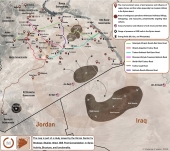As the central state authority declined, in favor of the emergence of sub-state formations including ethnic and religious ones, along with international and regional interventions, several local governance models have emerged across Syria as reflected by the dynamic military map. This led to the disappearance of some models and the decline of others, whereas other models achieved relative and cautious stability. In this regard, the “Autonomous Administration of North and East Syria” falls within the last category as it developed through several phases until it reached its current model. Although many years have passed since the actual declaration of the Autonomous Administration with its various institutions and bodies, the level of governance and nature of administration in these institutions and bodies remain problematic and questionable. Thus, this study seeks to explore the nature of the administration and the level of governance in this developing model using the judicial authority as an entry point, as it is considered one of the most prominent indicators. The impact of court processes is not limited to the judicial field, nor does it reflect the legal interest alone; it also offers several indicators on the political, administrative, security, economic, and social levels. Therefore, the study examines the judiciary system of the AA, its structure, various institutions, legal foundations, in addition to the employees working in and running those institutions and their qualifications. The study also attempts to explore the effectiveness, efficiency, and working mechanisms of this system, as well as its impact on North-Eastern Syria, in addition to the complex problems in that region (political, tribal, ethnic and “terrorism”).
The Autonomous Administration: A Judicial Approach to Understanding the Model and Experience
- Files Syria
- Experts Fadil Hanci, Sasha El Alu, Shadi Abo Fajer


